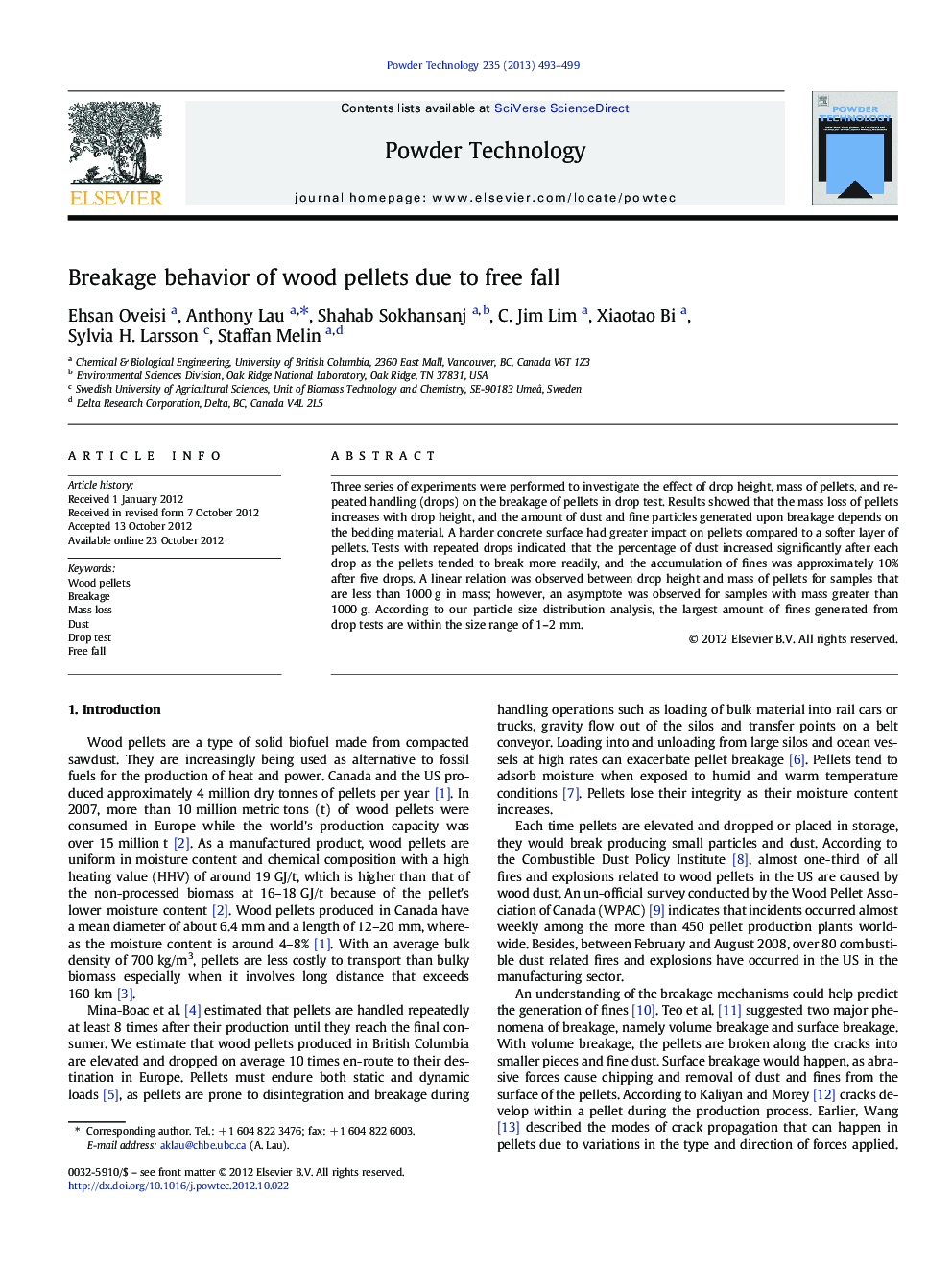| Article ID | Journal | Published Year | Pages | File Type |
|---|---|---|---|---|
| 236671 | Powder Technology | 2013 | 7 Pages |
Three series of experiments were performed to investigate the effect of drop height, mass of pellets, and repeated handling (drops) on the breakage of pellets in drop test. Results showed that the mass loss of pellets increases with drop height, and the amount of dust and fine particles generated upon breakage depends on the bedding material. A harder concrete surface had greater impact on pellets compared to a softer layer of pellets. Tests with repeated drops indicated that the percentage of dust increased significantly after each drop as the pellets tended to break more readily, and the accumulation of fines was approximately 10% after five drops. A linear relation was observed between drop height and mass of pellets for samples that are less than 1000 g in mass; however, an asymptote was observed for samples with mass greater than 1000 g. According to our particle size distribution analysis, the largest amount of fines generated from drop tests are within the size range of 1–2 mm.
Graphical abstractThe effect of drop height, mass of pellets, and repeated handling on the breakage of pellets was studied. The mass loss of pellets increases with drop height, and the amount of dust and fine particles generated depends on the bedding material. According to our particle size distribution analysis, the largest amount of fines is within the size range 1–2 mm.Figure optionsDownload full-size imageDownload as PowerPoint slideHighlights► The breakage of wood pellets is related to drop height in a linear manner. ► Fine particles generated due to breakage of pellets depend on the bedding material. ► Percent mass loss has a large increase after each drop during the repeated-drop test. ► Percent mass loss varies nonlinearly with the mass of pellets used in the drop tests. ► The largest amount of fines generated from dropping is within the 1–2 mm size range.
